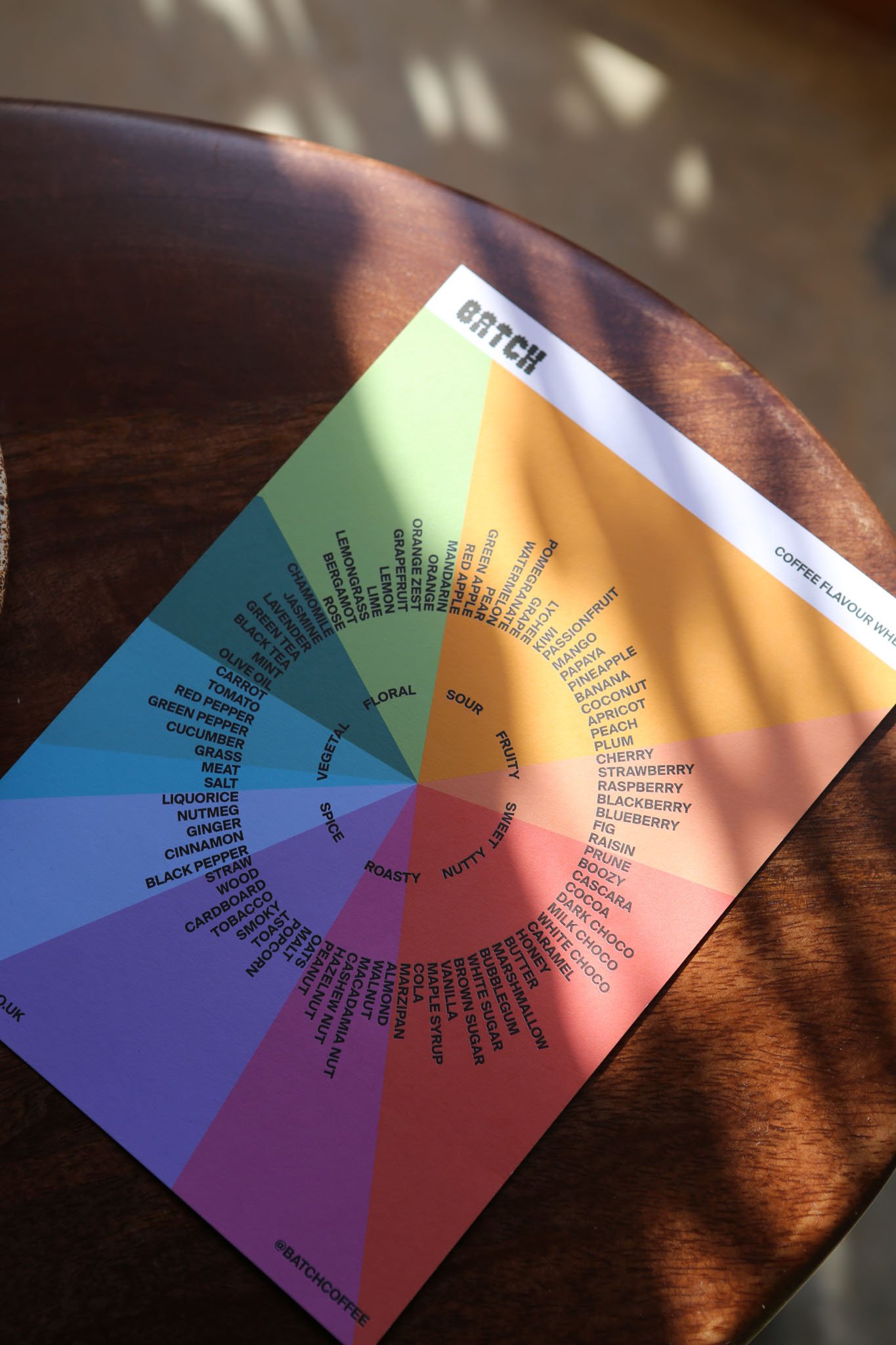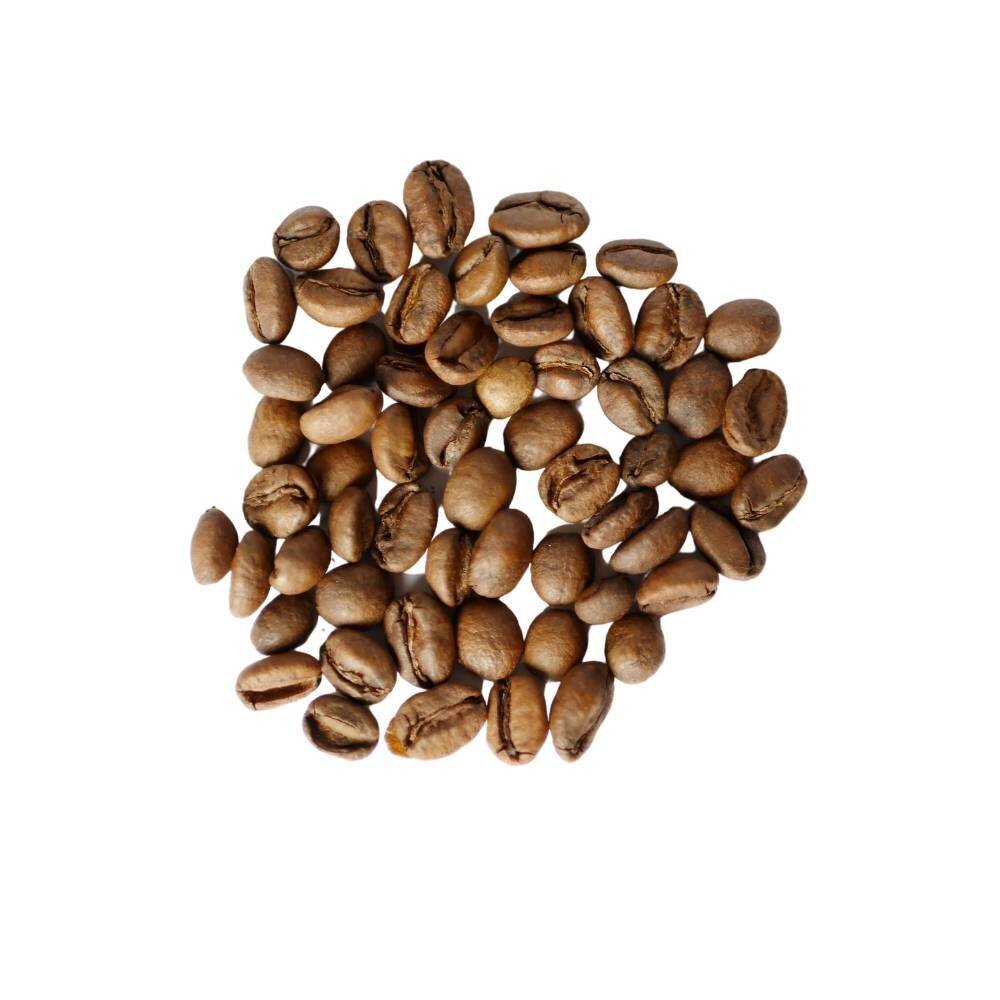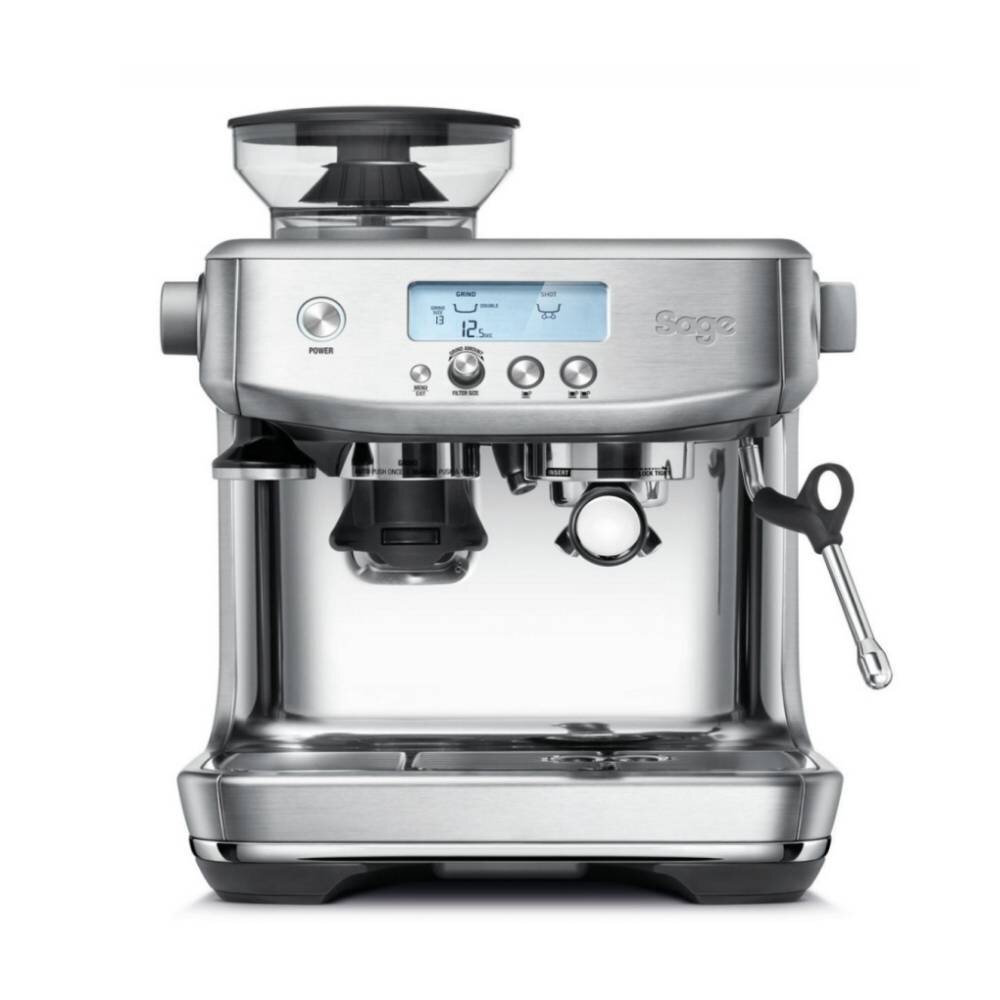How to Make Espresso at Home
Extracting the perfect espresso is both an art and a science
Here is our espresso guide and advice on how to make espresso at home, it’s one that we have practised for many years behind many coffee bars throughout the world.
Like with any coffee brewing method, there is no silver bullet.
You have to practice and gauge how each bag of espresso coffee beans will pour. A skilled barista is measuring and altering variables in their process all day.
So as long as you are aware of how to improve then in time you will see great results.
How to Make Espresso Overview
1. Clean The Portafilter
2. Purge The Group Head
3. Tare The Scales
4. Grind the coffee
5. Level The Grinds
6. Tamp The Coffee
7. Start The Shot
8. Start The Timer
9. Enjoy
SKIP TO
How To Make an Espresso in 8 Steps
Just so you know. When you buy via the links on our blogs, we may earn an affiliate commission at no cost to you. Learn More
What You Need to Make Espresso
Method
1. Clean The Portafilter
Knock any old espresso from the portafilter and clean the basket with a dry cloth, make sure you clear all of the used coffee grounds from the basket as this will result in your shot having a bitter over-extracted taste.
2. Purge The Group Head
Purge the group head by pressing the manual drip or the single shot button. This not only cleans the leftover coffee from the shower screen but also preheats the group head a little so your brew won’t lose as much heat into the surrounding structure.
3. Tare The Scales
Place the portafilter onto the scales and tare to zero.
4. Grind the coffee
Grind the coffee and place back onto the scales.
18g – 21g is the standard amount of coffee used for a double espresso shot served in coffee shops, however, this depends on the size of your basket as some only hold 15g down to 12g of coffee.
The Grind size is extremely important in any method of brewing coffee and is one of the key factors in the coffees overall taste. Ground too fine and the coffee will taste over-extracted and bitter, too coarse and the coffee will be under-extracted and sour. Take a look at our guide to grinding coffee beans to learn a little more. Ground coffee for espresso machines, however, should be fine – a little finer than table salt.
5. Level The Grinds
With your middle finger rotate flush against the portafilter and push the coffee into the basket making sure not to spill any. You should end up with the coffee roughly level to the top of the basket.
6. Tamp The Coffee
Tamp the coffee. Rest the basket end of the portafilter on the edge of your worktop so the spout is hanging down.
Using your index finger, middle finger and thumb to create a triangle around the base of the coffee tamper, press down with around 25 pounds/12kg of force (this is the standard force but is pretty random as not many people have any perception of quantifying their downward force). In simple terms it needs to be pressed into shape rather than forced, otherwise the water will not be able to pass through the coffee.
Once tamped, twist the tamper 90 degrees and with your fingers and thumb running flush along the rim of the basket make sure it feels flat.
7. Start The Shot
Place the portafilter into the espresso machine and place your glass or espresso cup underneath on top of a tared set of scales.
Press either the manual or automatic shot.
8. Start The Timer
Once you press the button start your timer.
After around 6 – 8 seconds the first drips of dark brown coffee should start trickling from the spout. This should then develop into a stream of coffee that will change in colour from dark brown – almost black through to a rich cinnamon colour and eventually yellow or blond.
When the weight of your shot (yield) reaches roughly double the amount of coffee you ground (dose), stop the pour.
In a perfect world in a perfect cafe, you would dose say 18g of coffee and yield 36g of espresso in 28 seconds, with the first drip at around 7 seconds.
Espresso Making Tips.
This is a rough guide to give you a baseline on how you extract your coffee. If your basket will only hold 15g then you will be looking at roughly 30g of yield. This also may take less time to pour, maybe 25 seconds.

However, espresso is an awkward beast. There are many variables;
- The water temperature may change (if you have been pulling a few shots previous, or if it is the first one of the day a lot of heat is lost in the machine)
- The pressure may also change (depends on your machine)
- The coffee you use will produce different shots each time. Even if you use the same coffee, roast date and freshness also come into play.
- The force of your tamp.
- The grind size.
If you follow these steps you should get a decent espresso, however, there is always room for improvement. If your coffee dripped slow and tastes bitter try making the espresso grinder coarser or dose less. If the shot was too quick try a finer grind or a higher dose.
Discover the best way to clean your coffee machine here.
FAQs
What is Espresso Culture?
Espresso coffee is a form of coffee that has taken on its own culture and transformed not only the way in which we consume coffee but also dramatically increased the worlds thirst for this wonderful caffeinated hot beverage.
Invented in Italy, firstly in Turin as the machine that produced large volumes of coffee but later and more importantly in Milan where Luigi Bezzera Invented the first commercial espresso machine.
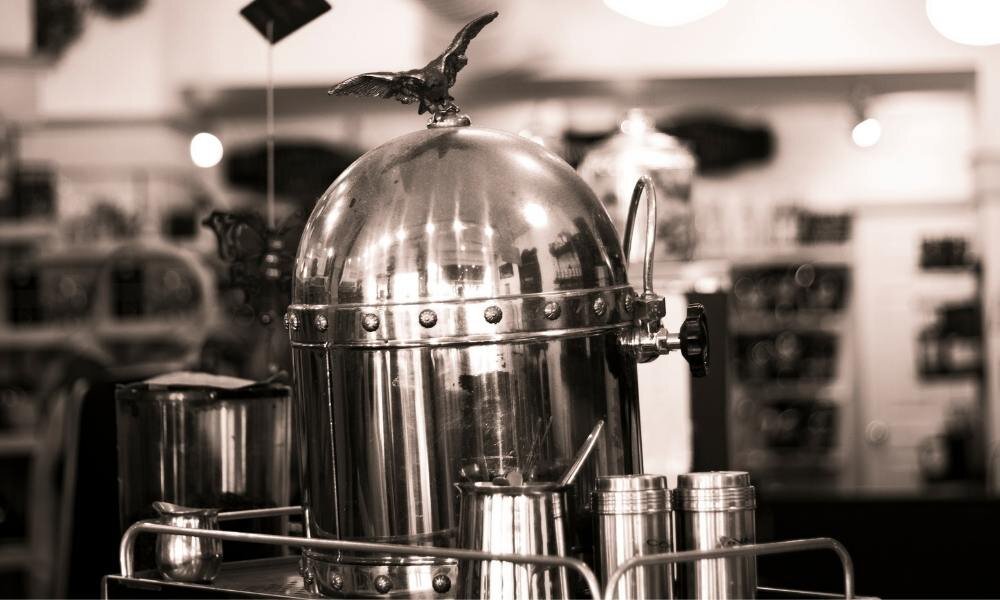
The espresso form of coffee grew and spread throughout the world evolving into various milky takes on the drink (latte and cappuccino).
As espresso culture became popular in the States during the ’80s and ‘90s cafe’s began to tussle for business and the second wave of coffee emerged through various commercialised coffee outlets like Starbucks.
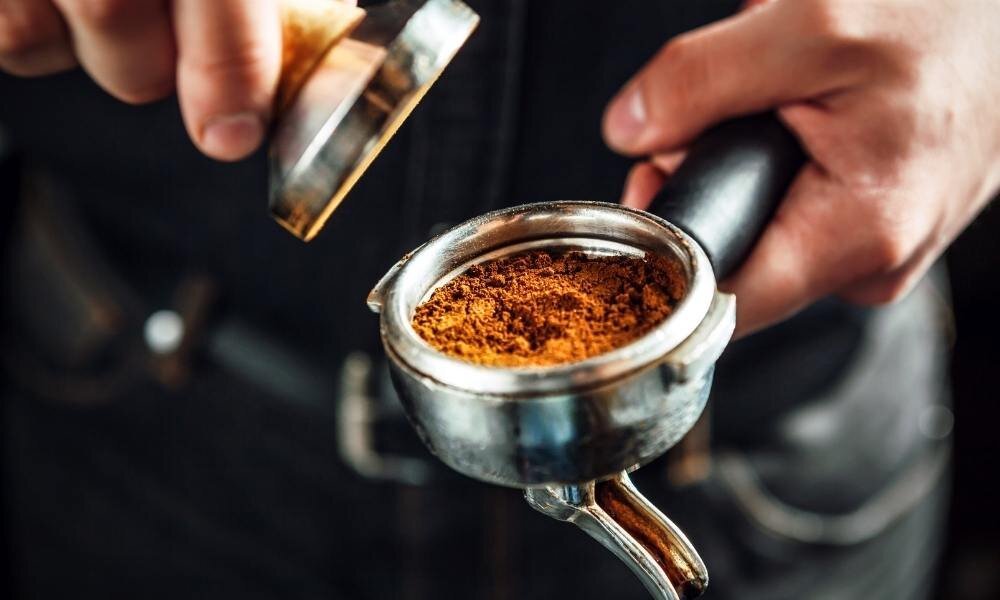
Today espresso is the coffee of choice for most cafe’s whether it’s served as a milky espresso based drink or as a long black, the ritual of frequenting your local cafe for your favourite coffee will hopefully never die. however recently with the improvement in affordable home espresso machines it is possible for anybody to learn how to make an espresso that rivals that in a coffee shop.
Are Espresso Beans Different?
Espresso beans can be different to other beans.
Firstly, coffee can be extracted from any coffee bean through an espresso machine as long as the grind size is set appropriately and the beans have been roasted relatively recently.
However, there are certain types of coffee beans that work well when prepared as an espresso or an espresso based drink.
Typically espresso beans are a blend of various origins and varieties of coffee beans. This is because the preferred taste profile for espresso is darker flavours with a rich body and low in acidity. This is because when mixed with milk (to make lattes or cappuccinos) the coffees flavours carry through similarly adding water to make americanos.
Espresso beans are also typically roasted to a medium – dark roast profile. This will enhance the darker notes and result in a richer tasting coffee.
That said, you can achieve fantastic results with light roasted single origin coffees with various flavour profiles accentuated with the high temperature and pressure from an espresso machine.
Check out The best coffee subscription box UK for some inspiration.
Is Espresso Bad For You?
Espresso is a concentrated form of a regular coffee that is ground finer and exposed to heat and pressure. That said the properties and nutritional makeup of espresso is the same as a regular coffee.
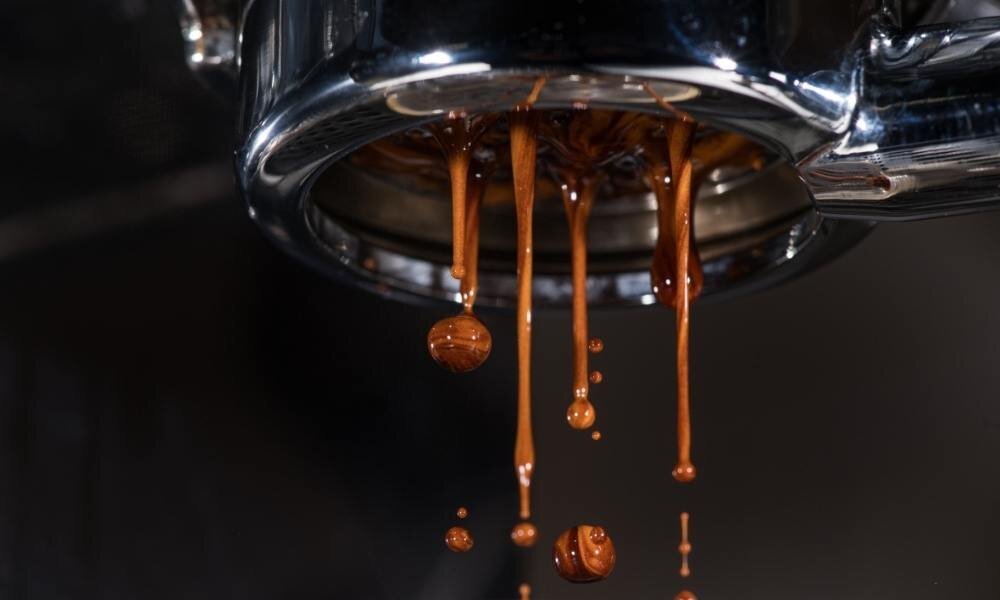
It has been proven that a couple of coffees per day lowers your risks of certain diseases, improves physical performance and burns fat.
Coffee can lead to high blood pressure because of the caffeine content so is unadvisable for pregnant women to drink.
Can espresso machines make regular coffee?
You can make regular coffee on your espresso machine by adding a double shot of espresso to a cup of hot water, otherwise known as an Americano in coffee shops.
What is the best espresso machine to buy?
There are many espresso machines on the market at the moment and domestic espresso machines are getting better in quality every year. The espresso machine that was used in the above guide was a Sage Barista Pro.
It is certainly worth investing in a machine that has the enough pressure (9 bars) to be able to extract coffee from adequately ground coffee beans.
What to do when espresso tastes bitter.
When espresso tastes bitter it means the coffee has been over-extracted. This means the coffee is ground too fine and/or there is too much coffee in the basket. Try and alter one of the variables first and taste to see if the coffee has improved.
What to do when espresso tastes sour.
When espresso tastes bitter it means the coffee has been under-extracted. This means the coffee is ground too coarse and/or there isn’t enough coffee in the basket. Try and alter one of the variables first and taste to see if the coffee has improved.
When to stop a shot of espresso
You should stop a shot of espresso when the yield (the coffee in the cup) weighs twice as much as the dose (the amount of ground coffee in the basket before you brew the coffee).

This should take roughly around 24 – 32 seconds depending on basket size, type of coffee and type of espresso machine.
If your shot takes longer than 32 seconds make your grind coarser. If it takes less than 24 seconds make your grind finer.
When you become more experienced in making espresso, you can tweak the grind and the dose to precision to make the perfect espresso.
In the market for a grinder? Find out which is the best manual coffee grinder for espresso.
Where to buy espresso beans?
Coffee beans that you can use in your espresso machine can be purchased at pretty much any independent coffee roaster. Batch coffee offers a subscription box which includes two new coffees in each box for you to try side by side.
Why are espresso machines so expensive?
If you want to buy a quality espresso machine then you will have to part with a few pennies. This is because, unlike many other methods of brewing coffee, espresso machines are engineered using high quality materials and technology needed to produce the pressure and precision needed to extract coffee in this manner.
Can you make espresso without machine?
The closest you can get to espresso without an espresso machine is by using a stovetop coffee maker like a moka pot. The concept is similar to that of an espresso machine, hot water is forced through a bed of coffee resulting in a rich and flavoursome coffee. Check out our article on How To Make Espresso At Home
How should espresso taste.
It all depends on the coffee beans you are using to make espresso and the type of coffee you are making. If you are using a blend that has been roasted for use on an espresso machine, the chances are that you should be able to taste rich chocolatey notes with a smooth mouthfeel.
The coffee should not taste too bitter, if it does try making the coffee grind coarser and finer if the coffee tastes sour.
Does espresso have more caffeine than regular coffee?
This is a common misconception. Whilst espresso has a higher concentration of caffeine per ounce (around 63mg per ounce compared to 12-16mg per ounce in regular coffee), a standard 8-ounce cup of coffee actually contains more total caffeine than a single espresso shot.
An average espresso shot is only 1-1.5 ounces and contains about 64mg of caffeine, whereas an 8-ounce cup of coffee contains roughly 96mg. So if you’re looking for a bigger caffeine boost, a regular cup of coffee will deliver more overall.
However, because espresso is consumed much more quickly than a leisurely cup of coffee, you’ll feel the effects of the caffeine faster. That concentrated dose hits your system quicker, which is why many people associate espresso with a stronger kick. If you’re after a rapid energy boost, espresso is your friend. But if you want sustained caffeine throughout the morning, stick with your regular cup.
How long do coffee beans stay fresh for espresso?
Freshness is absolutely crucial when it comes to pulling a great espresso shot. Coffee beans are at their peak flavour between 5 to 30 days after roasting. Within the first few days after roasting, beans release carbon dioxide which can interfere with extraction, so it’s best to let them rest for 3-7 days before brewing espresso.
Once opened, try to use your beans within 3-4 weeks for the best results. After this period, the coffee will start to lose its vibrant flavours and aromatics due to oxidation. You’ll notice the difference – the crema won’t be as rich, and those complex flavour notes will become muted.
Store your beans in an airtight container in a cool, dark place away from moisture, heat, and light. Oxygen and moisture are the enemies of coffee, so proper storage makes all the difference. If you find your espresso tasting flat or lacking that punch it once had, chances are your beans have gone past their prime. Always check the roast date on the bag and try to buy beans that were roasted recently – your espresso will thank you for it!

